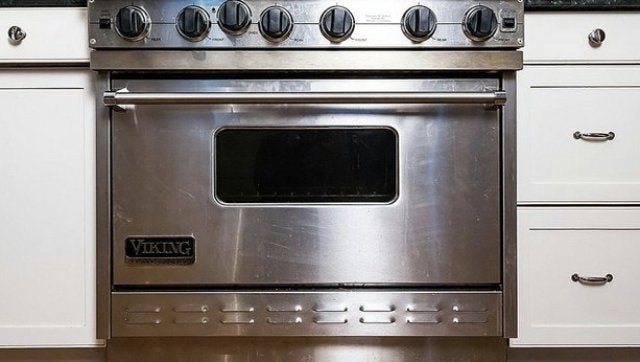
Inspired by conversations on the Food52 Hotline, we're sharing tips and tricks that make navigating all of our kitchens easier and more fun.
Today, we're giving you the rundown on ovens.
You don’t know how to use your oven. It’s nothing to be ashamed about. Maybe you make a batch of cookies when you want to feel accomplished (and full of cookies). Sometimes you burn them, and sometimes they fill the whole pan and you have a "cookie cake."
But maybe you want more from your oven. You deserve more from your oven.
All those new kale chip recipes don’t use a microwave. Slow braised lamb shanks aren’t going to impress your friends if they come out of a box. Your oven has roasting and baking potential; you can braise, broil and dehydrate. You can crisp things and make things tender! Just give it a chance -- get to know your oven.
Rainy weather (coming soon: April showers!) is the perfect time to start a lasting relationship with one of the best workhorses in the kitchen. Everybody loves an apartment that smells like chocolatey brownies or freshly roasted chicken.
Here are the basic principles to a healthy relationship with your oven.
• The racks in your oven move around. Most ovens come with more than one rack. Think about this before you preheat -- moving a 400-degree metal rack is not fun. And make sure there is nothing in your oven when you start -- many people keep other pots and pans in the oven because of space constraints. (Some people keep shoes and bags in there. Cooked shoes pose a lot of problems besides just finding some new kicks.)
• Temperature is important. If you open your oven, you will lose heat and your oven will need time to recover. Try not to open it more than necessary. As you use your oven more, you will need to check things less as you get a feel for the recipes.
• Heat rises. The top of your oven is hotter than the bottom. If you want something to cook slow and low -- think awesome pulled pork -- put it at the bottom of the oven. If you want something to crisp quickly, put it at the top of your oven and keep an eye on it (think sweet potato fries for your pulled pork sandwiches). Most standard roasting and baking recipes are just fine sitting on the middle rack, where heat is the most consistent.
• Ovens have a vent. It's usually in the middle of the oven, towards the back. It only takes one misplaced hand towel to start a fire.
• Your food needs space. Just like when you cook on the stovetop, the food in your oven needs to have enough room to cook. If food is packed too close together, some parts will be crispy and delicious and some will be soggy and pathetic. This is also known as “don’t crowd the pan.” It will help your chicken get crispy skin, and your cookies bake evenly without sticking together.
• Arm yourself with the right tools. One good sheet pan goes a long way. An oven mitt or pot holder will keep your hands free of burns. Also, cast iron pans are fantastic for oven use. Cast iron pans can be used instead of baking dishes -- who says your lasagna or meatloaf needs to be rectangular? How are you going to make skillet cornbread if you don’t have some rockin’ cast iron?
All in all, ovens are not hard to use -- you just need a little basic knowledge and a can-do attitude. Before you know it, you'll be roasting and broiling like a champ.
What are your tips for using your oven? Share your comments below!